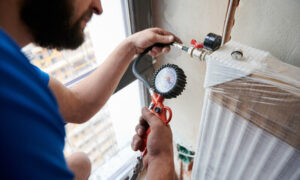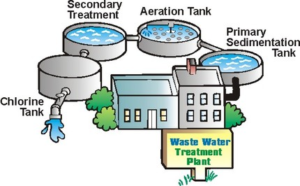A surgeon performs invasive medical procedures to remove diseased tissue or organs, repair broken bones or tissues, or replace them with transplants. Physicians diagnose patients, prescribe medications and offer non-surgical treatment options.

Surgeon Phoenix has undergone extensive medical training, including a bachelor’s degree and a surgical residency that lasts several years. They work in hospitals, collaborating with other medical professionals.
Surgeons have a long and rigorous education and training process. They must first complete medical school as would be the case for any physician, and then enter a surgical residency program that lasts from five to seven years, depending on the specialty. During their residency, they gain hands-on experience and learn advanced surgical techniques. They must also complete extensive continuing education to stay up-to-date on the latest medical and surgical advancements.
Surgeons must also have excellent interpersonal communication skills, as they work with patients and their families to educate them on surgery, its risks and benefits, and recovery. Surgeons must be able to answer questions, address concerns, and provide emotional support before, during, and after a surgical procedure. Surgeons must also be able to collaborate with other healthcare professionals, such as nurses and physicians, to deliver comprehensive patient care.
In the United States, the surgical residency is regulated by the Accreditation Council for Graduate Medical Education (ACGME). This organization sets educational standards for all residency programs and their sponsoring institutions. Residency programs must comply with Common Program Requirements and Specialty Specific Program Requirements. In addition, a Clinical Learning Environment Review (CLER) is conducted every two years to assess trainees’ engagement in safe high-quality patient care and to evaluate the quality of their mentorship.
After completing their residency, surgeons may seek board certification through the American Board of Surgery (ABS). The ABS serves patients and society by leading innovation in graduate medical education and by developing board certification for general surgery and its subspecialties. The organization is led by a limited number of surgeons, each of whom is nominated by their national surgical organizations and elected by their peers. The board is also composed of non-surgeon community directors and three at-large directors who are selected by an open nomination process.
The ASE Division of Education is committed to advancing innovation, scholarship, and leadership in surgical education. Its educational activities include teaching, research, and the development of surgeons. Its resources include a residency training manual, a resident career pathway, and an annual meeting. The ASE also offers a Surgical Education and Leadership Fellowship.
Work Environment
Surgeons work in a variety of settings, including hospitals and private practices. Their workplace is typically a sterile and controlled environment to prevent infections during surgical procedures. A surgeon’s job can be extremely stressful, especially in life-threatening situations. Despite this, they must remain calm and perform their duties effectively. In addition, they must be able to work well with other doctors and healthcare professionals.
In addition, a surgeon must have good hand-eye coordination, as they often operate on very small parts of the body with surgical instruments. They must also be able to concentrate for long periods of time under pressure. They must be able to handle stress and sleep deprivation, which can have serious health effects. At NexGen, we’ve seen that surgeons who don’t get a proper work-life balance can suffer from professional and personal side effects, such as depression and anxiety. This can also lead to medical errors, which have devastating consequences for patients.
A reputable surgeon has a deep understanding of human biology, medical science, and disease. They are able to diagnose and treat a wide range of illnesses, from broken bones to cancerous tumors. They also have an excellent grasp of the latest technology in their field, which allows them to provide the best possible care for their patients.
Physicians and surgeons are different from each other in many ways, including their educational requirements, work environments, and salaries. While both careers involve working with people, surgeons have a more demanding career path and higher earning potential.
After completing medical school, a surgeon must complete a residency before applying for a board-certified certificate. During their residency, surgeons learn the skills and knowledge necessary to perform various types of surgeries. A surgeon must also pass a rigorous examination before they can practice independently.
Once they have their board certification, surgeons can apply for a fellowship, which is similar to a residency. During this time, they train with more experienced surgeons in a particular area of medicine. A successful fellowship can help them achieve their career goals and advance in the field of surgery.
Job Duties
Surgeons perform surgical procedures to treat diseases, injuries, or deformities. They use sterile tools and invasive techniques to operate on anesthetized patients. Their duties include collecting and studying medical history, performing physical examinations, determining the need for surgery, and providing preoperative and postoperative care. They also adhere to regulatory and ethical protocols while operating on patients.
Surgeons must be able to communicate with patients and their families to explain the benefits, risks, and alternatives of treatment. They must be able to make quick decisions under pressure and work effectively in teams. They must have a high level of manual dexterity and excellent visuospatial awareness. They must also be able to tolerate long periods of intense concentration and stress.
Most surgeons practice in hospitals, where they are part of a team that includes anesthesiologists and surgical nurses. They may also be involved in emergency surgeries and trauma care. They are responsible for managing patient care before and after surgery, including prescribing medications. In addition, they must be able to handle complex operations and follow the results of their work.
There are several types of surgery, including open surgery and minimally invasive surgery. Each type has its own advantages and disadvantages. For example, minimally invasive surgery requires smaller incisions than traditional surgeries. However, these incisions can become infected and lead to complications. Open surgery, on the other hand, involves a larger incision. However, it provides better visibility of the operation site.
In addition to performing surgical procedures, surgeons must be knowledgeable about the latest advances in their field. They must be able to evaluate new technologies and adopt them only after they have been proven safe and effective. They must also be able to recognize and respond to potential complications during surgery.
Surgeons must be comfortable making fast decisions under pressure and working in a high-pressure environment. They must be able to tolerate intense concentration for hours at a time and remain focused on their work. Surgeons must also be able to cope with stress, which can be caused by the physical demands of the job or the emotional strain of dealing with sick patients.
Salary
After completing medical school and years of residency training, surgeons deserve to be compensated for their extensive efforts. Their skills and expertise are invaluable to the healthcare field, performing highly-skilled procedures that can be life-saving for patients. Yet, the salary of a General Surgeon can vary greatly depending on factors such as specialization, experience levels, and employment settings.
Physicians who specialize in areas that are in high demand often receive higher salaries. The aging population and rising prevalence of chronic diseases may lead to a greater need for healthcare professionals, boosting the average salaries of certain surgical specialties.
The number of hours surgeons work also impacts their salary. Many physicians report working 61 hours or more per week on average. This heavy workload has been linked to physician burnout, which can ultimately impact their earning potential.
As such, it’s important for surgeons to find a career that is both rewarding and sustainable. For some, this means finding a practice that offers a flexible schedule. For others, it may mean negotiating for more vacation days or a higher base salary.
The financial landscape of the healthcare industry is constantly changing, influenced by new technological advancements, policy changes, and shifting societal health needs. As such, it’s essential for medical professionals to stay up-to-date on compensation trends to make informed career decisions that will maximize their earning potential. Whether looking for a permanent position or exploring locum tenens opportunities, it’s crucial to have access to transparent salary data that can help doctors assess their options and feel confident during contract negotiations. To get the facts about salaries and benefits, download our free guide.



